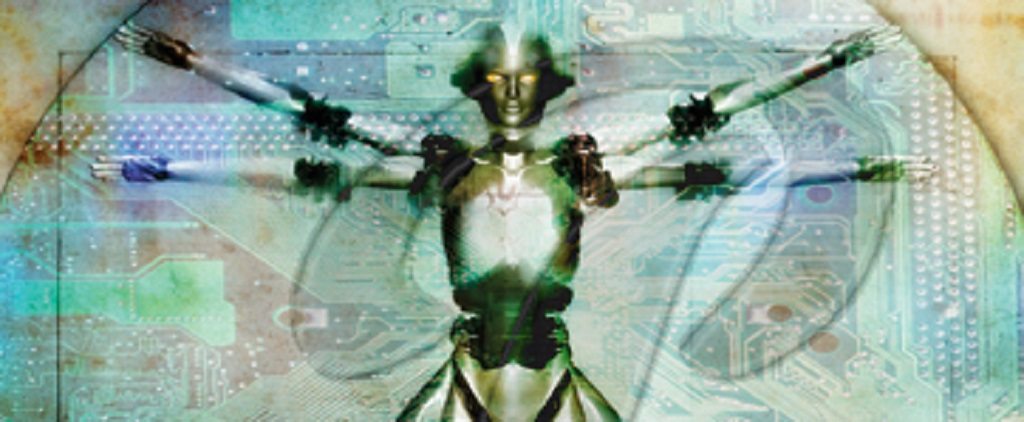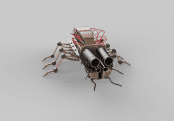[dropcap style=”font-size:100px;color:#992211;”]T[/dropcap]ranshuman as a concept can seem deeply depressing depending on how you come to the subject; the prospect of an improved human something like a bridge to a better being seems a fine idea and as such may even be a hopeful one,
“…a transhuman is a being that resembles a human in most respects but who has powers and abilities beyond those of standard humans. These abilities might include improved intelligence, awareness, strength, or durability. Transhumans sometimes appear in science-fiction as cyborgs or genetically-enhanced humans,” Joseph Carvalko, ‘The Techno-human Shell-A Jump in the Evolutionary Gap,’ 2012

SuitBot+PRINT (c) DERREN TOUSSAINT
There is though the nagging feeling that much of what motivates the technology is some exceptionally creepy people who want to live forever not as trans as in changing and evolving but as they are now, forever like vampires. That may be as deeply a misunderstanding of a potentially positive concept as the Nazis and Nietzsche’s Ubermensch
Robin McKie’s piece in the Guardian explores the concept further.
______________________________________________________
No death and an enhanced life: Is the future transhuman?
The 21st century tech revolution is transforming human lives across the globe
The aims of the transhumanist movement are summed up by Mark O’Connell in his book To Be a Machine, which last week won the Wellcome Book prize.
“It is their belief that we can and should eradicate ageing as a cause of death; that we can and should use technology to augment our bodies and our minds; that we can and should merge with machines, remaking ourselves, finally, in the image of our own higher ideals.”
The idea of technologically enhancing our bodies is not new. But the extent to which transhumanists take the concept is. In the past, we made devices such as wooden legs, hearing aids, spectacles and false teeth. In future, we might use implants to augment our senses so we can detect infrared or ultraviolet radiation directly or boost our cognitive processes by connecting ourselves to memory chips. Ultimately, by merging man and machine, science will produce humans who have vastly increased intelligence, strength, and lifespans; a near embodiment of gods.
Is that a desirable goal? Advocates of transhumanism believe there are spectacular rewards to be reaped from going beyond the natural barriers and limitations that constitute an ordinary human being. But to do so would raise a host of ethical problems and dilemmas. As O’Connell’s book indicates, the ambitions of transhumanism are now rising up our intellectual agenda. But this is a debate that is only just beginning.
There is no doubt that human enhancement is becoming more and more sophisticated – as will be demonstrated at the exhibition The Future Starts Here which opens at the V&A museum in London this week. Items on display will include “powered clothing” made by the US company Seismic. Worn under regular clothes, these suits mimic the biomechanics of the human body and give users – typically older people – discrete strength when getting out of a chair or climbing stairs, or standing for long periods….
_________________________________________________
Read the full article here.
Related Trebuchet content here.

Some of the news that we find inspiring, diverting, wrong or so very right.



















